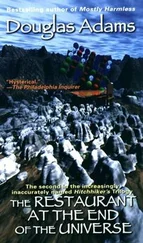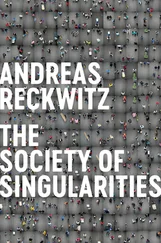In light of these catastrophic scenarios, today’s public and political discourse often grasps at the straws of nostalgia . In particular, the period of industrial modernity between 1945 and 1975, which just a few years ago seemed like an entirely distant past, has meanwhile been transformed into a projection screen for various sorts of nostalgic longing – nostalgia from the right, from the left, and from the center. Right-wing nostalgia in the United States, France, or Germany glorifies the traditional family values and gender roles that were still dominant in those years, as well as the era’s conservative morality and supposed cultural homogeneity. Left-wing nostalgia looks back to that period and yearns for its greater social equality, for its strong industrial workforce, and for the welfare state of the old industrial society. Finally, centrist nostalgia looks wistfully back to an era of people’s parties, the large middle class, and a presumably more leisurely pace of life. Such trips down memory lane often have less to do with politics than they do with retro aesthetic trends, but they can also serve the ends of various forms of political populism in an effective way.
Disillusionment as an Opportunity
The transformation of public debate from unwavering progressive optimism into dystopia and nostalgia – from one selective view to the next – does not exactly make it easier for us to understand and deal with the structures of contemporary society. However, the end of illusions does not necessarily have to lead to all-encompassing pessimism. The absence of illusions can also be a virtue that enables sober realism and opens up space for analysis. Beyond becoming mired in dystopian and nostalgic moods, it is possible to develop an undogmatic and differentiated perspective that can be critical without drifting into an untenable general account of the present. This is where sociology comes into play, because it can provide just such a sober analysis of the present. Unencumbered by belief in progress, sociology as I understand it does not, in its analysis of social structures and transformational processes, gloss over the contradictions and ambivalences that define late modernity; sociology neither whitewashes over such things in the name of morality, nor dwells on scenarios of social collapse. Rather, a realistic “socio-analysis” shares, in many respects, parallels with psychoanalysis, which Sigmund Freud developed to study individuals and culture. Psychoanalysis similarly makes no promise to resolve contradictions into a reconciled, harmonious existence. Gaining clarity – that is, making analytical progress – rather involves bringing paradoxes and ambivalences to light in order to reflect upon them and to encourage the patient, with the help of this newfound perspective, to take realistic steps toward changing his or her circumstances.
In this sense, the chapters of this book are attempts to examine the contradictory structures of contemporary society in a way that avoids both the overly simplistic narrative of progress and alarmist diagnoses of social decay. Unambiguous assessments and simple solutions are therefore not to be expected. On the contrary, whoever can tolerate ambivalences and deal with them productively is clearly at an advantage in late modernity. In today’s climate of debate, however, with its clear distinctions between friend and foe, the elementary psychological ability to tolerate ambiguity is in a sorry state. 6In my book The Society of Singularities , I attempted to develop a systematic theory of late-modern society that takes into account its ambivalences. 7In the present book, I intend to refine certain aspects of this theory. Here, I will be equally concerned with political, economic, and cultural dimensions. My analysis of contemporary society, moreover, is not restricted to Germany but, rather, pertains to the Western world as a whole, which – despite national differences – is presently undergoing similar transformations and facing similar problems throughout Europe and North America. The transformation of the West, in turn, can only be understood within a global framework.
From Industrial Modernity to the Society of Singularities
The point of departure for my perspective on today’s society is that, over the last 30 years, we have been experiencing a profound structural shift, over the course of which classical industrial modernity has transformed into a new form of modernity, which I call late modernity . Our understanding of the structures of late modernity, however, is still underdeveloped.
Industrial modernity first took shape at the beginning of the twentieth century, and it reached its zenith in the affluent postwar societies of the aforementioned trente glorieuses , which extended into the 1970s. This was a form of society based on rationalization, mechanization, and planning. Industrial mass production in large factories was just as characteristic of this society as large-scale housing projects, Keynesian economic planning, the expansion of the welfare state, and the firm belief in technical progress. For individuals, industrial modernity meant existing in an affluent society (in John Kenneth Galbraith’s terms) with a relatively egalitarian standard of living. Social control, cultural homogeneity, and cultural conformism were at a high; a clear division of gender roles and discrimination against sexual and ethnic minorities were not the exception but the rule. Following the French historian Pierre Rosanvallon, one could say that this was a “society of equals,” with all its bright and dark sides: a society governed by the rules of the general and the collective. 8
This classical industrial society no longer exists, even though certain thinkers still regard it as a guiding light. Of course, many of its elements persist; there is, after all, some overlap between historical periods. However, it has been supplanted as the dominant form of society by another form that some sociologists have designated postmodern and others have called high-modern, hyper-modern, or the second modernity. I prefer the term “late modernity.” This structural shift was already well on its way in the 1970s and 1980s, and its emblematic events include the student revolts of 1968, the oil crisis and the collapse of the Bretton Woods financial system in 1973, and the development of the Apple I (the first affordable personal computer) in 1976. Late modernity has been maturing since the 1990s. It is characterized by, among other things, radical globalization, which has dissolved the formerly clear separation between the “first,” “second,” and “third” world, and which increasingly blurs the boundaries between the global North and the global South. In regions of the South, rapid modernization is now taking place, while regions of the North are losing their traditional status.
It remains challenging to formulate a coherent understanding of the structural features of late modernity. The liberal narrative of progress, which I discussed above, might focus here on globalization (understood positively), democratization, the expansion of markets, liberalization, and digital networking. In this way, the structural shift at hand could be understood from one side as a linear development. We have to learn, however, to understand late modernity as a contradictory and conflicted societal formation that is characterized simultaneously by social growth and decline, by cultural valuation and devaluation, and ultimately by processes of polarization. This, in essence, is what makes it explosive. In large part, these asymmetries and structural disparities have been neither planned nor consciously brought about; rather, they are what sociologists refer to as unintended consequences. For this very reason, they are irritating. Unlike industrial modernity’s society of equals, late modernity has increasingly been taking on the form of a society of singularities . 9In short, this means: whereas industrial modernity was based, in so many facets of life, on the reproduction of standards, normality, and uniformity – and one could say that “generality” reigned supreme – late-modern society is oriented toward the production of unique and singular entities and experiences and it values qualitative differences, individuality, particularity, and the unusual. If one would prefer to use more familiar terms from sociological and political debates, one could loosely describe late modernity as a society of radicalized individualism. In a sense, it takes this individualism, which has been a part of modernity from the beginning, to an extreme level. To me, however, the traditional concept of “individualism” – as well as that of “individualization” – seems both too broad and too narrow to describe the social and political processes that characterize late modernity. 10
Читать дальше









